
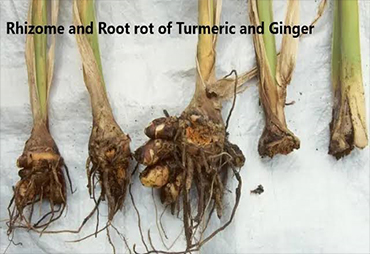
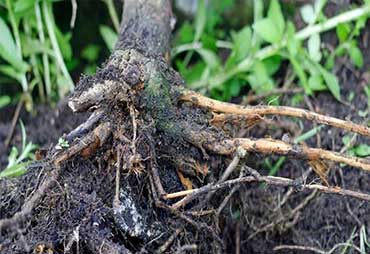
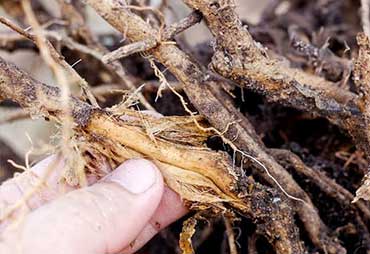
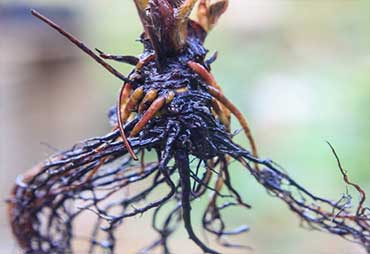
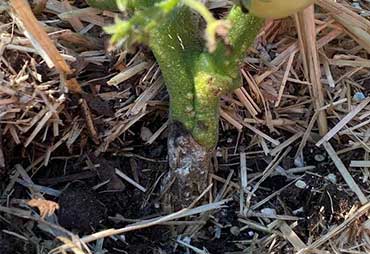
Meaning of Root Rot fungal disease
Root rot diseases can affect a wide range of crops
Ornamental Plants: Root rot can affect various ornamental plants, such as roses, azaleas, and rhododendrons.
Fruit Trees: Fruit-bearing trees like apple, pear, and peach can be susceptible to root rot.
Vegetables: Crops like tomatoes, potatoes, carrots, and beans can fall victim to root rot.
Cereal Crops: Root rot can also impact important cereal crops such as wheat, barley, and oats.
Legumes: Beans and peas are vulnerable to certain types of root rot.
Forestry Trees: Root rot diseases can harm trees in forests, including pines, oaks, and firs.
Nuts: Trees that produce nuts, like almonds and walnuts, can be affected.
Ornamental Trees and Shrubs: Many ornamental trees and shrubs can suffer from root rot, including azaleas, rhododendrons, and Japanese maples.
Potassium phosphite is used as a fungicide to manage root rot fungal diseases in plants.
Dilution: Start by diluting the potassium phosphite fungicide according to the manufacturer's instructions. Typically, you'll mix a specific amount of the product with a certain volume of water. Ensure you follow the recommended dosage rates to avoid overuse or underuse.
Application Method: There are several methods for applying potassium phosphite to combat root rot:
A) Soil Drench: This method involves pouring the diluted solution directly onto the soil around the base of the affected plant. This allows the fungicide to be absorbed by the roots and provide protection from the inside.
B) Foliar Spray: In some cases, you may also use a foliar spray, applying the solution directly to the plant's leaves. This method can provide some protection to the plant, but it's generally more effective when combined with soil drenching.
Timing: Apply the potassium phosphite fungicide as a preventive measure or when you first notice symptoms of root rot. Early intervention is often more successful in managing the disease.Repeat
Applications: Depending on the severity of the root rot and the specific product used, you may need to repeat the application at regular intervals, typically every 2-4 weeks during the growing season. Follow the product label for guidance on the frequency of applications.
Follow Safety Guidelines: Always wear appropriate protective gear, such as gloves and eye protection, when handling and applying fungicides. Follow all safety precautions mentioned on the product label.
Good Cultural Practices: Alongside fungicide application, it's essential to practice good cultural practices, including proper soil drainage, avoiding overwatering, and maintaining overall plant health. These practices can complement the effectiveness of potassium phosphite.
Consult an Expert: If you're unsure about the specific treatment for your plant or the severity of the root rot, consider consulting with a local horticulturist or agricultural extension office for tailored advice.





